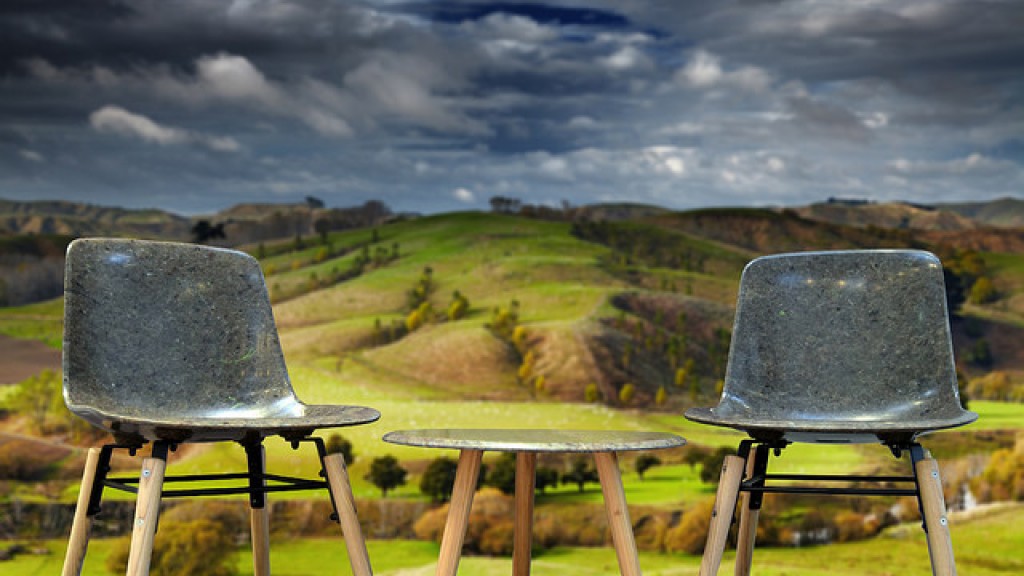Resources - Blog
Second Life SolidWool

Steven Parsons FRSA explains the challenges of end of life recovery for mixed fibre carpets, and talks about a recent collaboration between his organisation Wools of New Zealand and SolidWool: the ‘Second Life SolidWool’ chairs, created to inspire the change required to make sustainability desirable and profitable within the wool carpet industry.
With intelligent design thinking and innovation, and with a sprinkling of marketing dust we can create new circular industries.
Each year 400,000 tonnes of carpets are disposed of in the UK. About a third is diverted from landfill, largely thanks to Carpet Recycling UK and the forward thinking companies that have joined their crusade. The last half decade has seen an industry develop, from zero, which now places some value on pre-loved carpet fibre as a resource. Post industrial carpets and fitters off-cuts are put aside and turned into products like hanging basket liners and carpet underlay. Some carpet is converted to energy; some is refurbished and re-installed in social housing. However nearly 300,000 tonnes is still destined for landfill.
The carpet industry is making slow progress towards a circular economy with a handful of companies truly embracing sustainability and seeing both the brand and cost advantage, not to mention the very real risk of doing nothing. Within the next ten years not having an end-of-life solution may mean not having a marketable product.
However, the vast majority of carpets designed and sold in the United Kingdom still have a major design flaw in that the design process completely ignores circular values and manmade fibre is mixed with wool to meet a misconception that blended fibres perform better than non-blended. Retailers and manufacturers have become complacent, pumping out millions of kilograms of non-recyclable floor coverings in the belief that an “80/20” performs better. I refer to this as the dark age of carpet design and often ask how woven carpets performed so well for nearly two centuries before nylon was introduced. The technical, environmental and health benefits of 100% pure wool products are significant, but that’s for another blog.
In circular economy terms, very few carpets sold in the UK can be considered part of a biological metabolism, even those made from wool. Synthetic carpets can contain recycled content and often claim to be fully mechanical, but in reality 75% of those produced still end up in landfill with much of the rescued carpets heading for incineration. Design for recycling is required and soon. In the meantime we have to find a way of dealing with the carpets that exist that will be uplifted over the next decade and beyond.
Post-industrial carpets can and are being recycled. John Lewis for example insists their carpet fitters recycle off cuts and in the stores sell underlay made from the pieces. The big issue is post-consumer carpets. No infrastructure or business model exists that can handle soiled textiles. Building infrastructure means investment, investment requires a profitable business model.
Enter SolidWool. SolidWool are a UK company that wants to create jobs in the Devon town of Buckfastleigh following the closure local spinning mill. Justin and Hannah Floyd have been using new Herdwick wool to create their very stylish furniture. I asked SolidWool if they would work with us at Wools of New Zealand to use recycled carpet fibre, and they said yes!
The theory is that by applying design thinking to create products that have form, function and demand we can work towards creating value. Designing products that embrace recycled fibre for its renewable credentials shows that sustainability can be both trendy and profitable.
Wool is an amazing fibre. It’s, of course, rapidly renewable, but more than that it softens noise, insulates heat, is flame resistant and even absorbs toxins creating a safer more breathable interior. It’s an incredibly smart raw material that we are throwing away. The second life chairs by SolidWool capture some of wool’s benefits, they are designed for longevity and will exists as furniture much longer than they did in their first life as carpets, but crucially they are the start of a new conversation about realising the true potential of what can no longer be considered waste.
Find out more about SolidWool’s approach to materials and material flows here.





